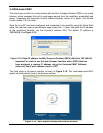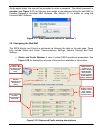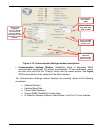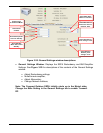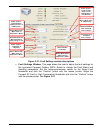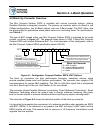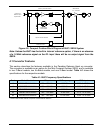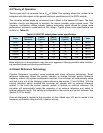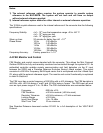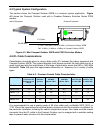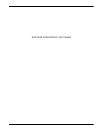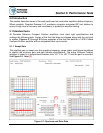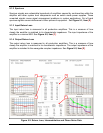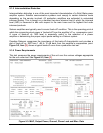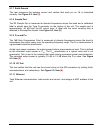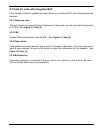
44 208143 REV - Operations Manual, HPA3, Mini Compact Outdoor SSPA
Notes:
1) The external reference option requires the system operator to provide system
reference to the BUC/SSPB. The system will not lock and will have no output
without external reference applied.
2) Internal reference option allows for either internal or external reference operation.
The 10 MHz crystal reference used in the internal reference of the converter has the following
specifications:
Frequency Stability: ≤±1 • 10
-8
over the temperature range -40 to +90 °C
≤±1 • 10
-9
aging per day
≤±5 • 10
-8
aging per year
Warm up time: 20 minutes for better than ≤±1 • 10
-8
Phase Noise: 10 Hz -120 dBc/Hz
100 Hz -140 dBc/Hz
1 KHz -145 dBc/Hz
10 KHz -152 dBc/Hz
100 KHz -155 dBc/Hz
Frequency Accuracy: Factory preset to ±1 • 10
-8
4.4 FSK Monitor and Control
FSK Monitor and control comes standard with the converter. This allows the Mini Compact
Outdoor SSPB to be fully and remotely monitored and controlled through the system’s IFL. An
embedded controller enables remote communication and fault detection via the IF input
between the SSPA and a Paradise Datacom Evolution Series L-Band modem. This signal
consists of a 650 KHz Frequency Shift Keyed carrier that is multiplexed onto the L-Band input
IFL along with the external reference signal. The monitor and control functionality is explained
in detail in Section 8.
The FSK input has a center frequency of 650 KHz with a ±5% tolerance. The FSK deviation is
±60 KHz, with +60 KHz being a “mark” and -60 KHz being a “space”. The FSK input will work
over an input power range of -5 to -15 dBm. The FSK characteristics are summarized below:
Frequency 650 kHz ± 5%
FSK Deviation ± 60 kHz nominal (+60 kHz mark)
Deviation Tolerance ± 50 kHz minimum, ± 70 kHz maximum
Locking Range ± 32.5 kHz
Input Level Range -5 to -15 dBm
Start Tone Time 10 ms minimum
See Paradise Datacom document number 201410 for a full description of the VSAT BUC
Protocol.



